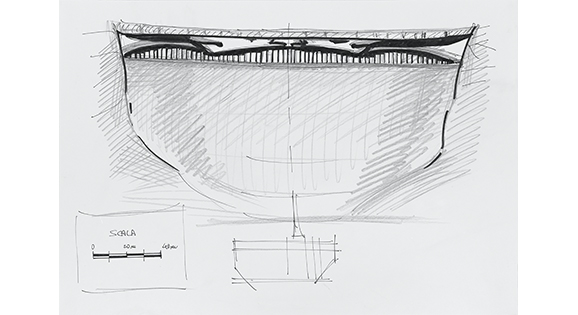
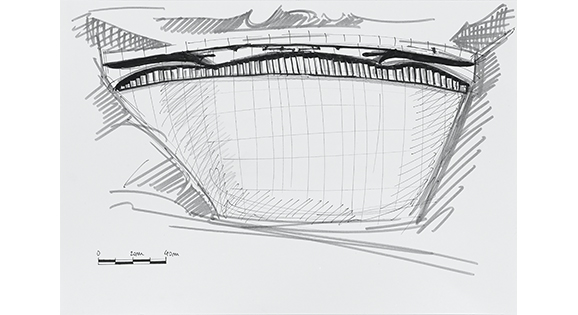
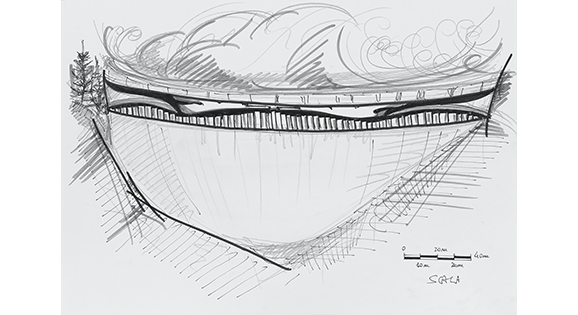
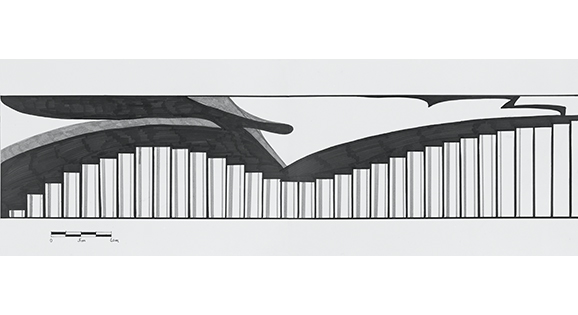
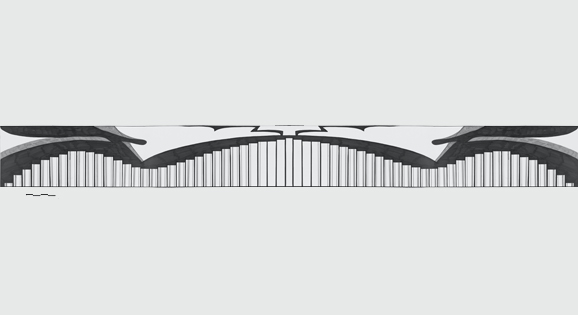
Title: Rimendo: Dante Pg XIII, 107-108 rimendo qui la vita ria/lagrimando a colui che sé ne presti. Synounymous of rimondare: to wash, to prune, to amend e to redeem from mistakes. The dam becomes a free space, where cultural change cross the history.
Short description: a pipe organ lies on the top of the dam. The organ pipes, which are portrayed under an arch, display a sine vawe. The upper side of the arch follows the outline of two stylised doves, so they also serve as an architectural element. The keystone reminds us of the Greek letter TAU. The sine vawe is connected to a trascendent feature of the sound the pipe organ gives out, making the human history passable. The pipe organ is seen as our means of inducing harmony and spiritual increase and it is a must in a place of worship. According to what the artist says, this work intends to align the historical events with the human incidents that are rarely clear and acceptable to human beings in creative and positive view.
Technical remarks: the work is based on an actual subject which is depicted in a stylised and symbolic way. Shapes and impressive colours are used to give prominence to the concept. The figures stand out against the white and black of the background. The painting material is acrylic white, black and gray. The work needs a first coat of cement fixative beneath the paint layer and a second coat of the same fixative as final coat. It will keep the work unchanged. A laser beam launched from a building platform is required for sketching silhuette profiles.The total amount consists of the price of the scaffolding, the laser, the fixative and the paint. The area measures about 5000 square meters.
–
Titolo dell’opera: Rimendo: Dante Pg XIII, 107-108 rimendo qui la vita ria/lagrimando a colui che sé ne presti. Sinonimo di rimondare: lavare, potare, emendare e riscattare da errori. La diga si fa luogo aperto, di elaborazione culturale, che traguarda la storia.
Descrizione dell’opera: sulla parte superiore della superficie della diga si staglia la forma di un organo. Le sue canne sono raffigurate sotto un arco, disposte in modo da sottolineare un andamento sinusoidale; l’arco è descritto superiormente da due elementi quasi architettonici che prendono forma dai corpi stilizzati di due colombe. La chiave dell’ arco richiama la lettera greca tau. La forma sinusoidale riporta ad un aspetto trascendente del suono emesso che evoca uno stato di accettazione della storia umana meno percettibile dai sensi. L’organo è considerato come strumento di conciliazione e di innalzamento spirituale e come tassello imprescindibile di un luogo di culto. Secondo l’artista, quest’opera riveste un significato univoco di ricollocazione dei fatti storici nella vicenda umana, non sempre comprensibili ed accettabili all’uomo stesso, in un’ azione creativa e propositiva.
Parte tecnica: l’opera, pur incentrata su di un soggetto reale, lo rappresenta in maniera stilizzata e quasi simbolica. Per far risaltare il suo significato, vuole avvalersi di forme e colori d’impatto sull’osservatore. Le figure si delineano per accostamento di fondo bianco e nero. Il materiale necessario per la realizzazione è colore acrilico resistente bianco, nero e grigio nelle quantità richieste. Per la stabilità dell’opera nel tempo, si utilizza un fondo di speciale fissativo per cemento sia precedentemente alla pittura sia come strato protettivo finale. Per i contorni delle figure, si auspica l’utilizzo di specifica proiezione laser da apposito soppalco di cantiere. I costi riguardano le spese dell’impalcatura, del laser, del fissaggio e dei colori. La superficie da coprire è di circa 5000 metri quadrati.
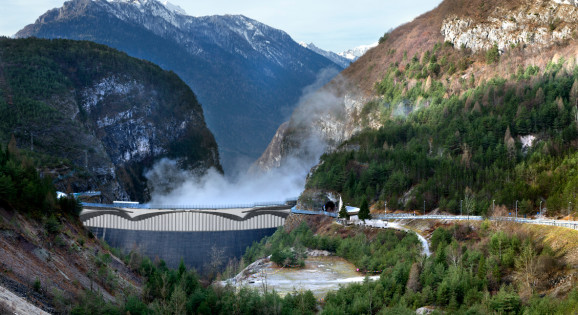
One Response to Luca Chiesura
Leave a Reply

 Belluno
BellunoHe graduated in 1997. He has an advanced and self-educated talent for art; he is a conceptual artist who makes the most of drawing, painting, image and performance.
He has had his works of art exhibited in many domestic galleries and he has been praised for his creative ability again and again.
Precoce talento artistico autodidatta, artista concettuale, utilizza disegno, pittura, video e performance.
Ha esposto le sue opere in varie gallerie nazionali e ha ricevuto numerosi riconoscimenti di merito.

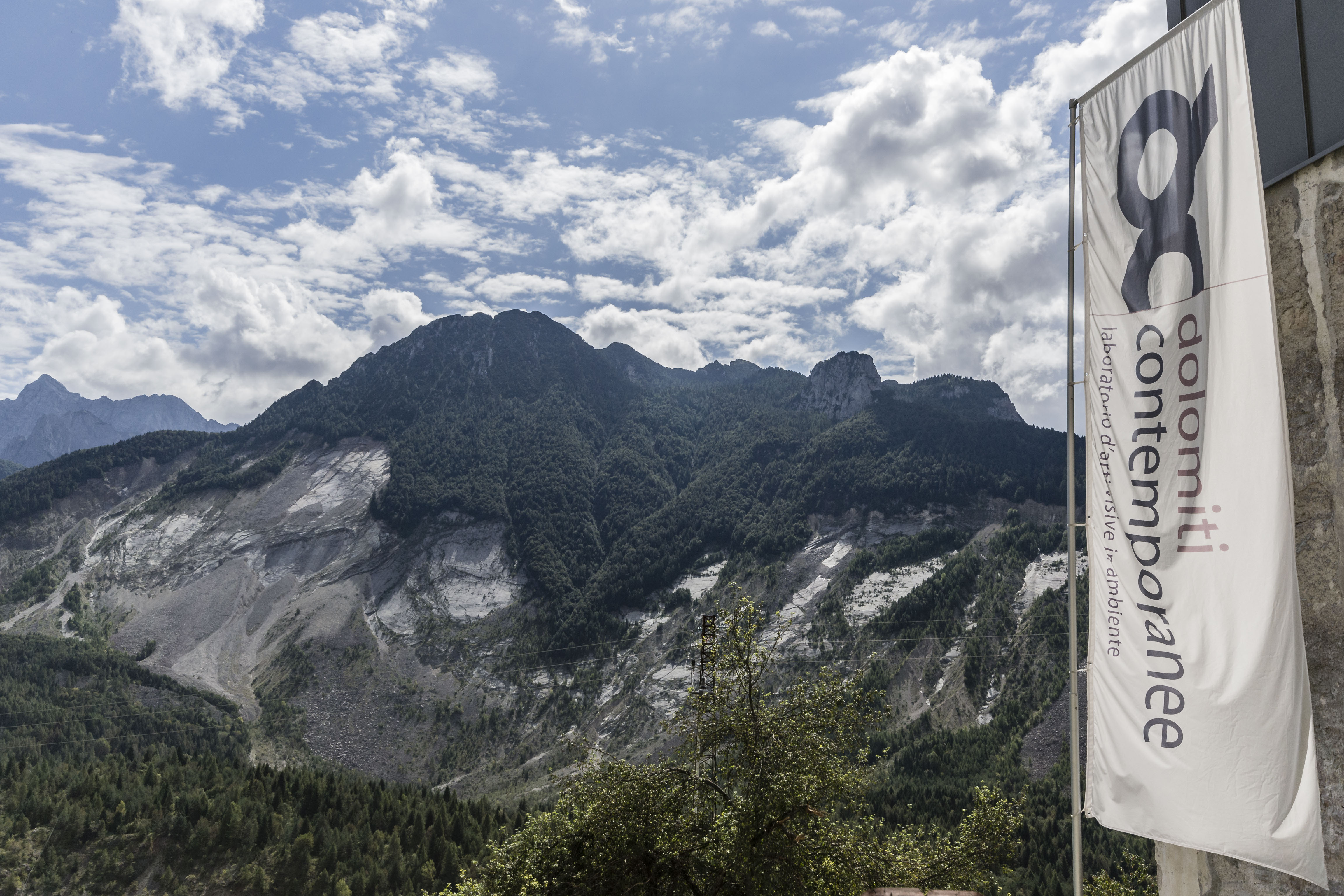
Tuesday, June 15th 2021, 2 – 4 PM, webinar panel:
two calls for vajont: fase _restart.
Vajont: [...]
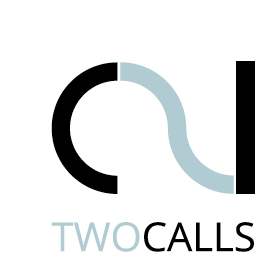




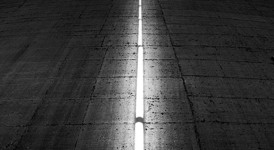
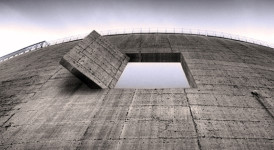
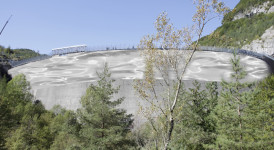

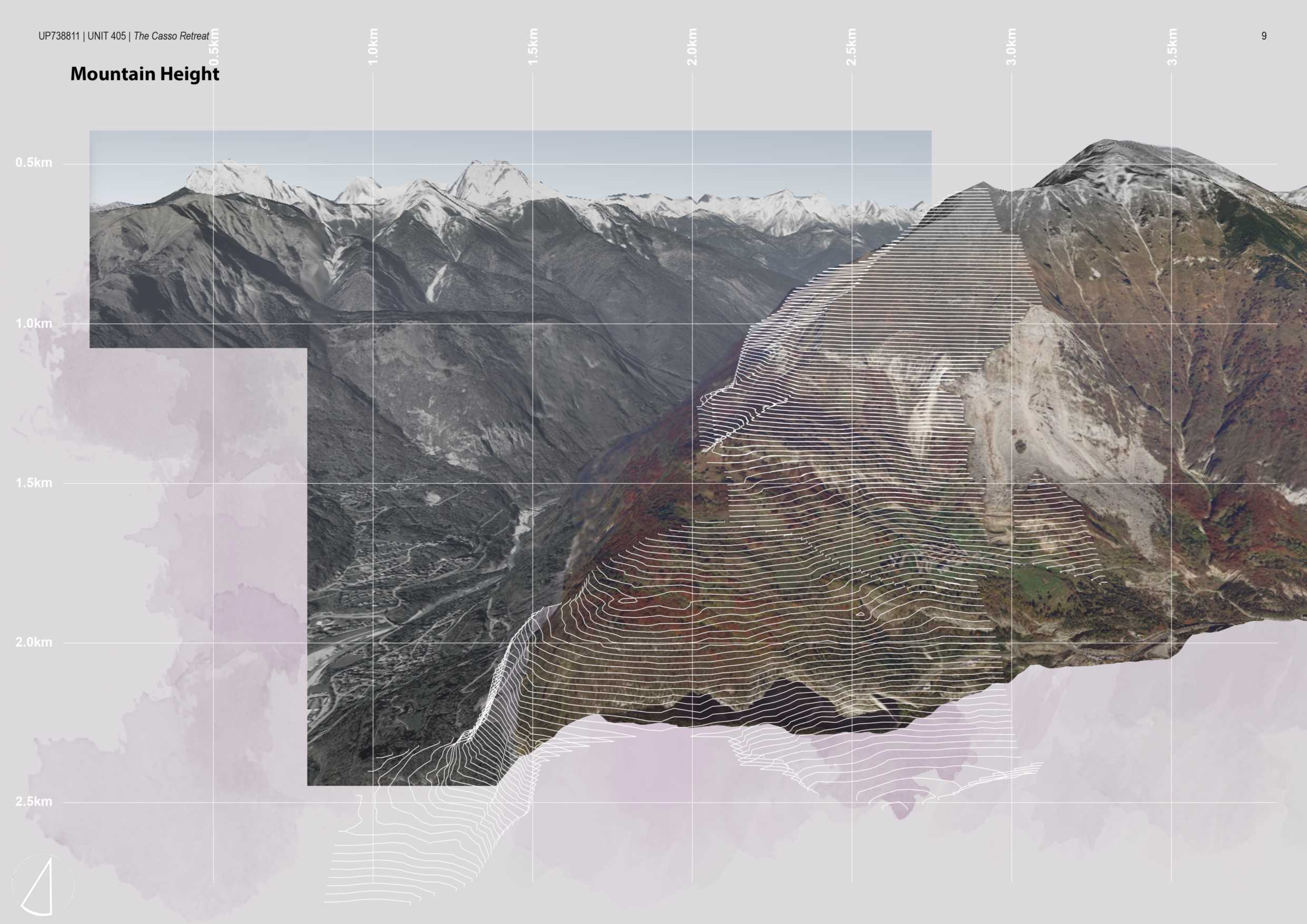









Se fossero vere canne d’organo sarebbe molto bella, così sambra una barriera frangirumore dell’autostrada